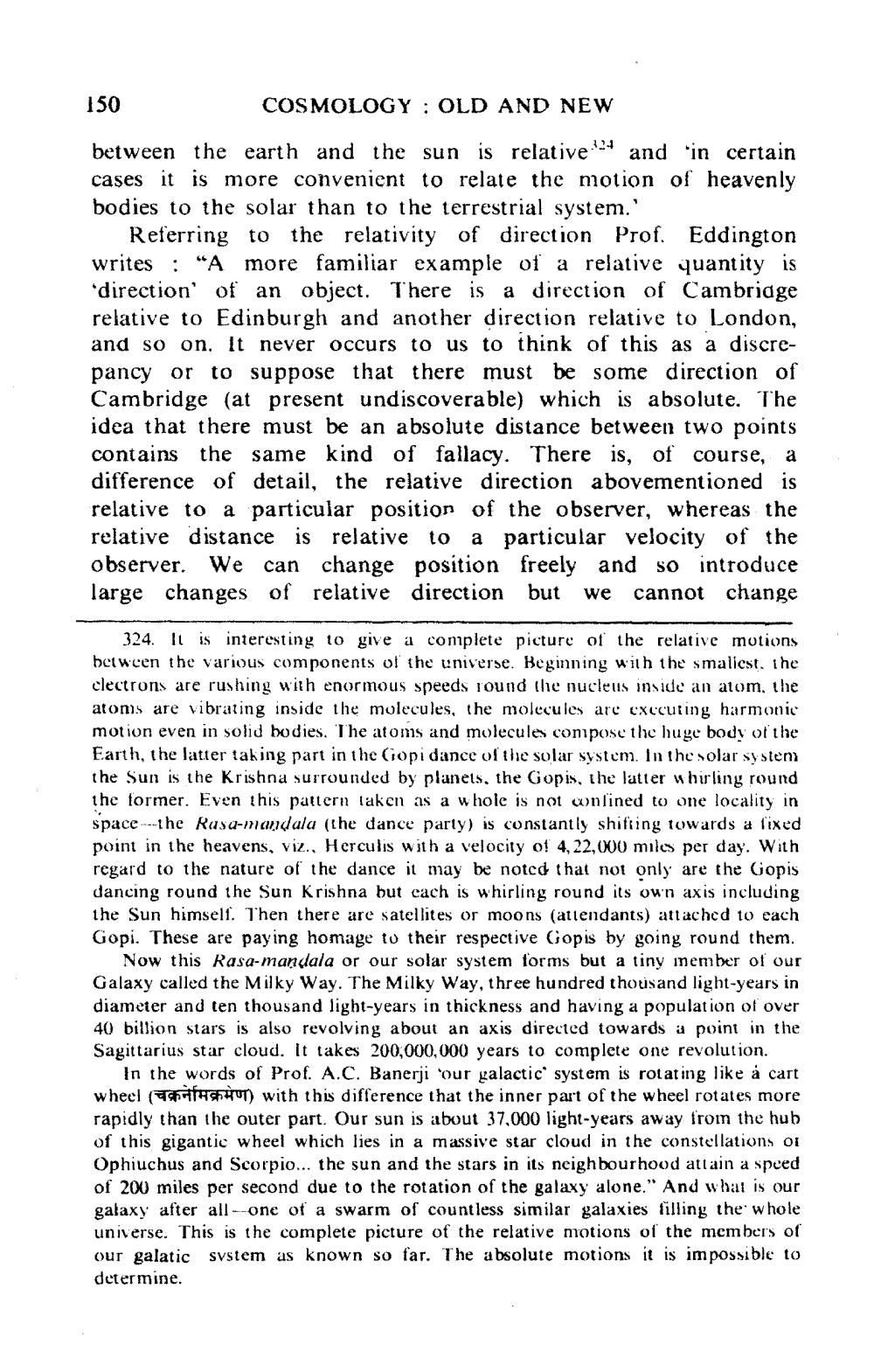________________
150
COSMOLOGY OLD AND NEW
between the earth and the sun is relative and 'in certain cases it is more convenient to relate the motion of heavenly bodies to the solar than to the terrestrial system.'
Referring to the relativity of direction Prof. Eddington writes: "A more familiar example of a relative quantity is 'direction' of an object. There is a direction of Cambridge relative to Edinburgh and another direction relative to London, and so on. It never occurs to us to think of this as a discrepancy or to suppose that there must be some direction of Cambridge (at present undiscoverable) which is absolute. The idea that there must be an absolute distance between two points contains the same kind of fallacy. There is, of course, a difference of detail, the relative direction abovementioned is relative to a particular position of the observer, whereas the relative distance is relative to a particular velocity of the observer. We can change position freely and so introduce large changes of relative direction but we cannot change
324
324. It is interesting to give a complete picture of the relative motions between the various components of the universe. Beginning with the smallest, the electrons are rushing with enormous speeds round the nucleus inside an atom, the atoms are vibrating inside the molecules, the molecules are executing harmonic motion even in solid bodies. The atoms and molecules compose the huge body of the Earth, the latter taking part in the Gopi dance of the solar system. In the solar system the Sun is the Krishna surrounded by planets, the Gopis, the latter whirling round the former. Even this pattern taken as a whole is not confined to one locality in space-the Rasa-mandala (the dance party) is constantly shifting towards a fixed point in the heavens, viz., Herculis with a velocity of 4,22,000 miles per day. With regard to the nature of the dance it may be noted that not only are the Gopis dancing round the Sun Krishna but each is whirling round its own axis including the Sun himself. Then there are satellites or moons (attendants) attached to each Gopi. These are paying homage to their respective Gopis by going round them.
Now this Rasa-mandala or our solar system forms but a tiny member of our Galaxy called the Milky Way. The Milky Way, three hundred thousand light-years in diameter and ten thousand light-years in thickness and having a population of over 40 billion stars is also revolving about an axis directed towards a point in the Sagittarius star cloud. It takes 200,000,000 years to complete one revolution.
In the words of Prof. A.C. Banerji 'our galactic system is rotating like a cart wheel (T) with this difference that the inner part of the wheel rotates more rapidly than the outer part. Our sun is about 37,000 light-years away from the hub of this gigantic wheel which lies in a massive star cloud in the constellations or Ophiuchus and Scorpio... the sun and the stars in its neighbourhood attain a speed of 200 miles per second due to the rotation of the galaxy alone." And what is our galaxy after all-one of a swarm of countless similar galaxies filling the whole universe. This is the complete picture of the relative motions of the members of our galatic system as known so far. The absolute motions it is impossible to determine.




